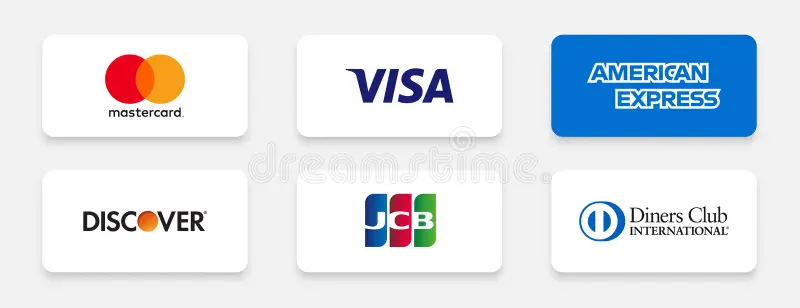Credit cards have become an essential part of modern finance, offering convenience, rewards, and purchasing power to millions of users worldwide. But have you ever wondered how credit card companies make money? While cardholders enjoy perks like cashback, travel miles, and interest-free periods, issuers and networks (like Visa, Mastercard, and American Express) employ multiple revenue streams to sustain their businesses.
In this article, we’ll explore the key ways credit card companies generate profits, including:
-
Interest Charges (APR)
-
Interchange Fees
-
Annual Fees and Account Fees
-
Penalty Fees
-
Balance Transfer and Cash Advance Fees
-
Foreign Transaction Fees
-
Partnerships and Co-Branded Cards
Let’s break down each of these revenue sources in detail.
1. Interest Charges (APR)
The most significant source of income for credit card companies is interest charges, also known as the Annual Percentage Rate (APR). When cardholders carry a balance beyond the grace period (typically 21-25 days), issuers charge interest on the remaining amount.
-
How it works: If you don’t pay your full balance by the due date, the issuer applies a daily interest rate (calculated from the APR) on the outstanding amount.
-
High APRs: Credit cards often have APRs ranging from 15% to 25% or higher, making them one of the most expensive forms of borrowing.
-
Compounding interest: Interest compounds daily, meaning you pay interest on previously accrued interest, increasing the total debt over time.
Since many consumers carry balances month-to-month, interest charges generate billions in revenue for card issuers annually.
2. Interchange Fees
Every time you swipe your credit card, the merchant pays a small percentage of the transaction to the card network and issuer. This is called an interchange fee.
-
Typical rate: Around 1% to 3% per transaction, depending on the card type (rewards cards often have higher fees).
-
Who gets the fee?
-
Card issuer (e.g., Chase, Citi) receives most of it.
-
Payment network (e.g., Visa, Mastercard) takes a smaller cut.
-
-
Why merchants accept it: Despite the cost, merchants prefer cards over cash for convenience and security.
Interchange fees are a massive revenue source, especially for networks like Visa and Mastercard, which process trillions in transactions yearly.
3. Annual Fees and Account Fees
Many premium credit cards charge annual fees, particularly those offering high-end rewards, travel perks, or exclusive benefits.
-
Examples:
-
Basic cards: Often $0 annual fee.
-
Travel cards (e.g., Chase Sapphire Preferred): $95–$550/year.
-
Luxury cards (e.g., Amex Platinum): Up to $695/year.
-
-
Other fees: Some issuers charge account maintenance fees or monthly fees for certain cards.
While not all cards have annual fees, those that do contribute significantly to issuer profits, especially when cardholders don’t fully utilize the benefits.
4. Penalty Fees
When cardholders miss payments or exceed limits, issuers impose penalty fees, which are highly profitable.
-
Late payment fees: Up to $40 per occurrence (recently capped lower by regulations).
-
Over-limit fees: Charged if a transaction exceeds the credit limit (less common now due to opt-in requirements).
-
Returned payment fees: Applied if a payment bounces (e.g., insufficient funds).
While regulations like the CARD Act of 2009 have reduced excessive penalty fees, they remain a steady income source.
5. Balance Transfer and Cash Advance Fees
Credit card companies encourage balance transfers and cash advances—but at a cost.
-
Balance transfer fees: Typically 3%–5% of the transferred amount (e.g., $30–$50 on a $1,000 transfer).
-
Cash advance fees: Around 3%–5% of the withdrawn amount, plus higher APRs (up to 30%) with no grace period.
These fees add up, especially since cash advances and balance transfers often target consumers already in debt.
6. Foreign Transaction Fees
Many credit cards charge foreign transaction fees (usually 1%–3%) on purchases made outside the card’s home country.
-
Who pays? Travelers or online shoppers buying from international merchants.
-
Exceptions: Some travel cards waive these fees to attract frequent flyers.
Though not the biggest revenue stream, these fees contribute to issuer profits from global transactions.
7. Partnerships and Co-Branded Cards
Credit card companies partner with airlines, hotels, and retailers to offer co-branded cards, sharing revenue from spending and loyalty programs.
-
How it works:
-
Airlines (e.g., Delta SkyMiles): Earn a cut when cardholders book flights.
-
Retailers (e.g., Amazon Visa): Benefit from increased customer spending.
-
-
Revenue sharing: Issuers and partners split interchange fees and profits from increased card usage.
These partnerships drive customer loyalty while generating additional income.
Conclusion
Credit card companies employ a multi-faceted approach to profitability, leveraging interest charges, merchant fees, penalties, and premium card offerings. While consumers benefit from convenience and rewards, issuers capitalize on revolving balances, transaction fees, and financial missteps.
Understanding these revenue streams can help cardholders make smarter financial decisions, such as:
✅ Paying balances in full to avoid interest.
✅ Choosing no-annual-fee cards unless rewards justify the cost.
✅ Avoiding cash advances and late payments to minimize fees.
By being aware of how credit card companies make money, you can use credit more strategically and avoid unnecessary costs.
